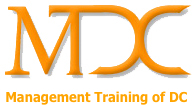It’s Hyperalimentation, not Hyperventilation
There in the plexiglass display case, in Mesa Verde National Park are two crude crutches from our stone-age past. We spent yesterday exploring the cliff dwellings of pre-historic Pueblo Indians — they built their homes in the sides of sheer rock walls. They did not have the wheel; they did not have feeding tubes. They had to climb cliffs to get into their homes.

But they did fashion crutches for crippled children.
Each is crafted from one rough stick, topped with a Y-shaped branch, held together with a leather yolk painstakingly stitched together. They are on display in the Mesa Verde museum as evidence of the care these cave-people spent on crippled children — the official archaelogists’ interpretation.
Today, a federal judge has declined to order the reinsertion of Terri Schiavo’s feeding tube. This is impossible to believe.
John Derbyshire over at National Review Online thinks that this concern over a disabled woman’s life amounts to “hyperventilation.” I am a big fan of John’s; I think he is a very smart man. But he, and some other very smart people, are getting this issue all wrong. And it revolves around one simple, central point:
It’s hyperalimentation, not hyperventilation.
What’s “hyperalimentation?” It’s food offered through a tube. I offer some niche expertise. My husband used to be a medical sales rep for medical device companies — one of which was IVAC, which makes fluid-control machines. He sold, and trained the clinicians how to use, the plastic tubing that is used to feed people who are disabled.
(Med-techie stuff. There are two ways to do this — enteral and parenteral feedings, by gut and by intravenous catheter — a feeding tube into your stomach with pureed food or an IV catheter into your arm with a nutrient admixture. Terri receives food through a simple hose into her stomach.)
Here’s the key point: food is not medicine. In fact, Terri’s parents could administer the feeding at home. Jack, my husband, says he would be happy to teach them how to do it.
Here’s what Discovery.com says about home feedings:
A nutritional support team will be involved with the use of hyperalimentation. The person’s nutritional status is studied and his or her nutritional needs calculated. The solution is changed when the persons needs change. For instance, if a person is taking in food or fluids by mouth, he or she will need fewer calories from the solution. The family will be taught how to administer the hyperalimentation and care for the person if he or she is to receive care at home.
I repeat: food is not medicine. Even Rush Limbaugh got this point wrong on his show yesterday during a conversation with a doctor from San Francisco in the midst of an otherwise wonderful broadcast about Terri’s plight.
It must have been quite a burden for the prehistoric cliff dwellers to care for a crippled child. Climbing was an essential part of their lives; and their lives were consumed with survival in a way we cannot imagine except through visiting a dig. They certainly had easy ways to dispose of inconvenient people — the cliffs loomed.
Yet still, they sat in the dirt and lovingly crafted a crutch.
How is it possible that these pre-historic people were more civilized in this than we?
Be sure to follow Your Business Blogger(R) and Charmaine on Twitter: @JackYoest and @CharmaineYoest
Jack and Charmaine also blog at Reasoned Audacity and at Management Training of DC, LLC.
Thank you (foot)notes,
Update June 22, 2005; Darleen’s Place provides reasoned words on Another voice
June 21, 2005; The definitive gathering point on this issue is Blogs for Terri which has an update
ProLife Blogs has more.

Leather, tartan, bows, and punk
Nope, it’s not a fashion trend…It’s the Cotillion!
Go check out this week’s roundup of the High Priestesses of the Blogosphere!
Hosted this week at:
Steal the Bandwagon
The Anchoress
Reasoned Audacity
Little Miss Att…